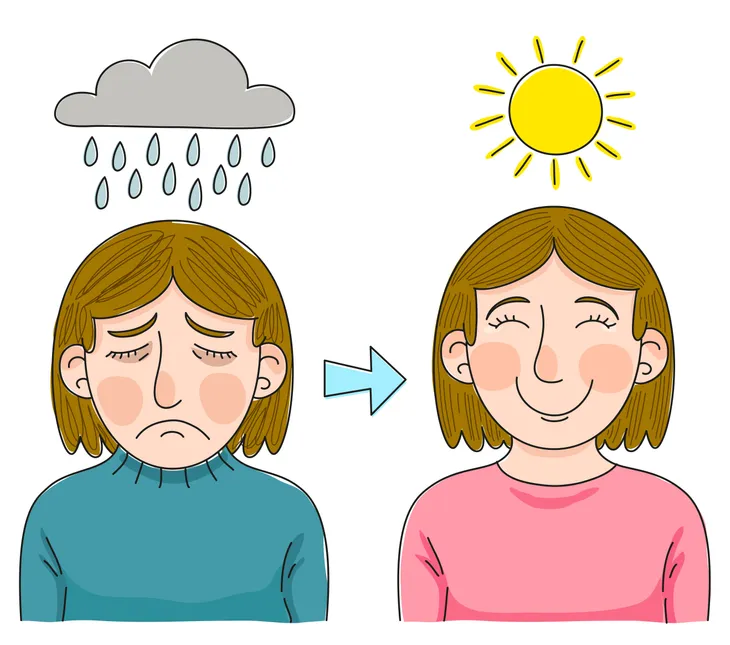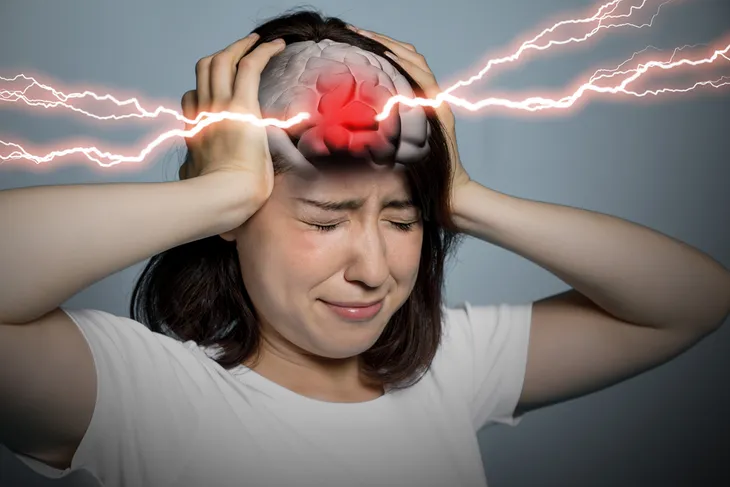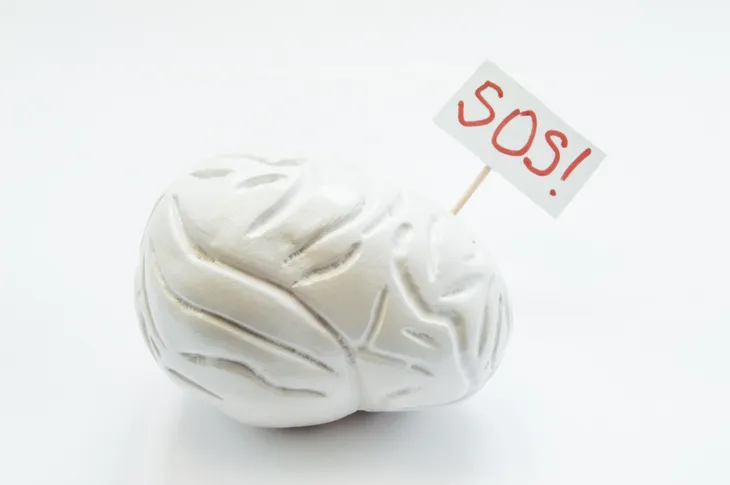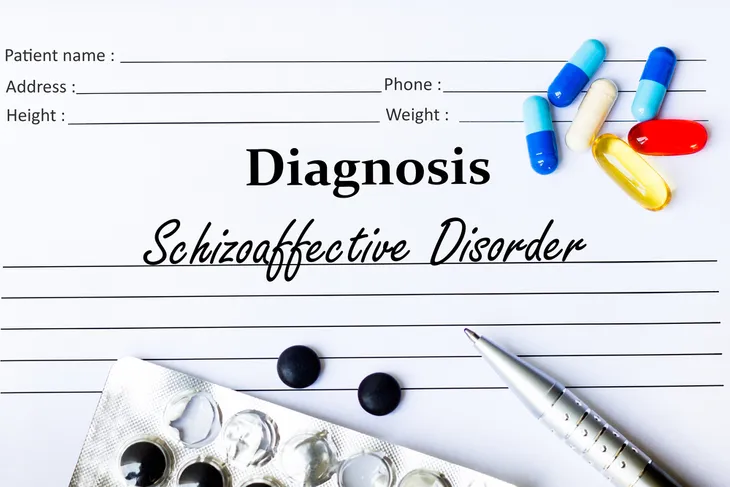Schizoaffective disorder is a condition that is defined mainly by symptoms of schizophrenia (such as delusions or hallucinations), along with a major mood disorder. In that way, it’s not the same as schizophrenia, but it has markers of the condition.
Because it can have a mix of symptoms, it can be tough to recognize all the signs and get a proper diagnosis – and to make things even more complicated, there’s more than one type of the disorder. Let’s take a look at 12 facts about schizoaffective disorder…
There Are Two Types
The Mayo Clinic notes there are two types of schizoaffective disorder – bipolar type and depressive type. In the bipolar type, the patient will experience at least two symptoms of schizophrenia such as hallucinations or delusions, as well as episodes of mania and (in some cases) major depression.
There’s also the depressive type, which doesn’t involve mania – which is a period of being “up” and full of energy, among other symptoms such as reckless behavior. “Schizoaffective disorder may run a unique course in each affected person, so it’s not as well-understood or well-defined as other mental health conditions,” notes the source.
Psychotic Symptoms
Not surprisingly, there are telltale psychotic symptoms that come with schizoaffective disorders. These can include delusions, which the Mayo Clinic says involve “having false, fixed beliefs, despite evidence to the contrary.”
There are also possible hallucinations, “such as hearing voices or seeing things that aren’t there,” it adds. Patients can also experience “impaired communication,” such as responding with answers that are not related to the question.
Mood Symptoms
Along with the aforementioned psychotic symptoms, a patient with schizoaffective disorder will also have some kind of mood disorder. This can include depression (in the depressive type), which can include feelings of sadness and emptiness, says the National Alliance on Mental Illness.
Meanwhile, if the patient has been diagnosed with the bipolar type, the source says they will experience periods of mania, or “euphoria,” which may sound great but it’s not always so to the affected person. Mania can involve racing thoughts and risky behavior that can put them (and possibly others) in danger.
Causes of Schizoaffective Disorder
The National Alliance on Mental Illness says the exact cause of this disorder isn’t understood, but there are a number of factors that may lead to it. For example, genetics (family history) can play a role, it adds.
There’s also brain structure and brain chemistry that can come into play – the source notes brain scans are unveiling this area of research. Stressful events such as a major loss can trigger symptoms, and so can the use of psychoactive drugs such as LSD, it adds.
Risk Factors
These risk factors mirror the possible causes of the disorder, but the Mayo Clinic gets a bit more specific on the genetics component. It says having a close blood relative that has schizoaffective disorder, schizophrenia or bipolar disorder can raise your risk.
The National Alliance on Mental Illness says that while men and women appear to experience schizoaffective disorder at the same rate, “men often develop the illness at an earlier age.” Substance abuse is a major risk factor that should get “integrated treatment,” it adds.
When It’s Time to See a Doctor
The person being affected by schizoaffective disorder may not be aware of the symptoms, so you should “talk to that person about your concerns,” notes the source. “Although you can’t force someone to seek professional help, you can offer encouragement and support and help find a qualified doctor or mental health professional,” it adds.
You should seek help on a person’s behalf if they can no longer feed or clothe themselves, or are displaying suicidal thoughts or behaviors, it adds. Call 911 right away if these signs become clear, or take them to the nearest emergency room, it notes.
Getting a Diagnosis
It can be a challenge for a medical professional to arrive at a diagnosis because of the mixed symptoms of schizophrenia, bipolar disorder and depression, notes the National Alliance on Mental Illness.
The source explains in order to get a diagnosis, a patient must experience a period of a major mood disorder (depression or mania) mixed with symptoms of schizophrenia; delusions or hallucinations for two or more weeks without a major mood episode; symptoms of a major mood disorder for the majority of the illness; and confirmation that drugs or medications are not causing the symptoms.
Misdiagnoses Are Common
WebMD explains that “there are no laboratory tests” to specifically pinpoint schizoaffective disorder, so doctors rely on medical history and in some cases brain imaging and blood tests to rule out other causes.
It says if there’s no physical cause, the patient will often be referred to a mental health professional to conduct interviews to narrow down to the disorder. However, because the disorder combines two mental illnesses, “Some people may be misdiagnosed as having schizophrenia, and others may be misdiagnosed with a mood disorder,” it adds.
Possible Complications
There are a number of other challenges that can come with schizoaffective disorder. The Mayo Clinic says that family and interpersonal struggles are more common, as well as social isolation and suicidal behavior.
A person with the disorder may also have trouble securing employment (and may end up in poverty or be homeless), have coexisting anxiety problems, develop substance abuse issues, and suffer from “significant health problems.”
Drug Therapies
Once a proper diagnosis has been secured, doctors will have a better idea of which medications to administer (depending on the type of the disorder). Antipsychotics are often prescribed for the underlying psychotic symptoms – however, the only FDA-approved drug for this disorder is Invega, says WebMD.
To address the mood disorder component, doctors will often turn to antidepressants or a mood stabilizer such as lithium adds the source. These drugs will often be taken at the same time as the antipsychotic medication, it adds.
The Psychotherapy Approach
While medications can be very helpful in these cases, there are also counseling options that can aid in the management of the disorder, adds WebMD. This therapy is designed to educate the patient about their condition, and advise them how to manage associated problems, it adds.
There’s also skills training involved that helps a patient work on improving their work and social skills, as well as establishing healthy habits of grooming and self-care, it notes.
There’s No Foolproof Prevention Plan
Unfortunately, there’s no guaranteed way to ensure a person doesn’t end up with schizoaffective disorder, but getting a quick diagnosis is key (knowing your risk factors may be able to aid in this process).
Starting treatment for the disorder earlier “can help a person avoid or reduce frequent relapses and hospitalizations and help decrease the disruption to the person’s life, family, and friendships,” says WebMD.















